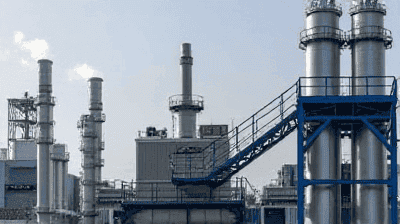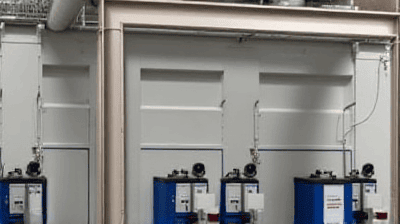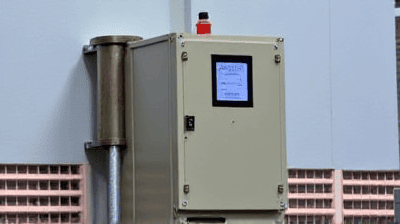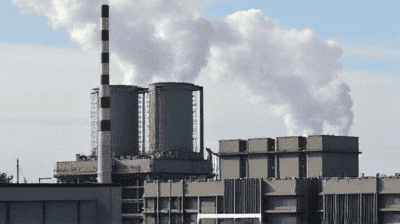
As industries continue to grow and evolve, the importance of sustainable practices and pollution control becomes increasingly crucial. Among the myriad of technologies being employed to mitigate emissions from industrial processes, electrostatic precipitators (ESPs) stand out as a highly effective solution for cleaning smoke emissions.
Electrostatic precipitators are air pollution control devices that use electrostatic force to remove particulate matter from exhaust gases. ESPs are employed in various industries, including power generation, cement production, metal processing, and waste incineration. Their ability to capture fine particles, including dust, smoke, and other pollutants, makes them essential in maintaining air quality and adhering to environmental regulations.
The operation of an electrostatic precipitator involves several key components and steps:
Charging the Particles: When exhaust gases enter the electrostatic precipitator, they pass through a charging section where high-voltage electrodes create an electric field. This electric field charges the particles within the air stream, causing them to acquire a negative or positive charge, depending on the design of the ESP.
Collection Plates: The charged particles are then attracted to collection plates that have an opposite charge. These plates are typically made of conductive materials and are positioned within the precipitator. As particles move towards the plates, they collide with and adhere to the surface, effectively removing them from the gas stream.
Cleaning the Plates: Over time, the collection plates accumulate a layer of collected particles, which must be removed to maintain the efficiency of the ESP. Various cleaning mechanisms, such as mechanical vibrating, air jets, or water sprays, are employed to dislodge the particles, allowing them to fall into a hopper for disposal.
Emissions Control: Once the particles are captured, the cleaned gas exits the electrostatic precipitator and can be released into the atmosphere, often meeting regulatory standards for air quality.

The effectiveness of electrostatic precipitators in cleaning smoke emissions depends on several factors, each of which plays a crucial role in the overall performance and efficiency of the system. Understanding these factors is essential for optimizing ESP design and operation.
The size and charge distribution of the particles in the flue gas significantly affect the efficiency of an ESP. Smaller particles are more challenging to capture, as they are less likely to adhere to the collection plates due to their low mass and inertia. Additionally, the distribution of charge on the particles plays a crucial role in their ability to be drawn to the collection plates. A uniform charge distribution can enhance capturing efficiency.
The flow rate of the gas stream through the electrostatic precipitator influences the residence time of the particles within the system. A higher flow rate can decrease the contact time between the particles and the collection plates, reducing capture efficiency. Therefore, maintaining an optimal gas flow rate is essential to maximize particle collection.
The voltage applied across the electrodes in an ESP determines the strength of the electric field that charges the particles. Higher voltages can enhance particle charging and, consequently, improve collection efficiency. However, excessive voltage can lead to dielectric breakdown (arcing) within the system, resulting in reduced performance and potential damage.
The temperature and humidity of the gas stream can affect the behavior of particulate matter and the overall performance of the ESP. High humidity can lead to condensation on the particles, impacting their charge properties and adhesion to the collection plates. Additionally, temperature fluctuations can influence gas viscosity and particle behavior.
The chemical composition of the particles being collected also plays a role in the performance of electrostatic precipitators. Certain materials may have lower adhesion properties or different charge characteristics, affecting their capture efficiency. It is essential to consider the specific types of emissions being treated when designing an ESP system.
Electrostatic precipitators are widely used across various industries to control emissions and improve air quality. Some of the most common applications include:
In power plants, electrostatic precipitators are employed to capture particulate matter generated during the combustion of fossil fuels such as coal and natural gas. By effectively removing ash and other pollutants from flue gases, ESPs help power facilities comply with environmental regulations while minimizing air quality impacts.
The cement industry is a significant source of particulate emissions stemming from the milling and burning of raw materials. Electrostatic precipitators are used to capture dust and other pollutants released during the manufacturing process, helping to maintain emissions within acceptable limits.
During processes like steel production and metal smelting, significant amounts of particulate matter are generated. Electrostatic precipitators are employed to remove these particles from exhaust gases before they are released into the atmosphere, contributing to cleaner air quality in industrial regions.
In waste-to-energy facilities, electrostatic precipitators are essential for collecting ash and particulate matter produced during the incineration of waste materials. By capturing these emissions, ESPs help to minimize the environmental impact of waste disposal while recovering energy from refuse.
The forestry and paper industries generate a considerable amount of particulate emissions from processes such as drying and grinding. Electrostatic precipitators are used to capture these emissions, reducing their release and contributing to overall air quality improvement.

Electrostatic precipitators offer several advantages in controlling smoke emissions and enhancing air quality, including:
ESPs are known for their high efficiency in capturing particulate matter, with collection rates often exceeding 99 percent for certain particle sizes. This effectiveness makes ESPs one of the most reliable tools for controlling emissions.
Electrostatic precipitators can be designed to suit a variety of applications and industries, making them versatile solutions for emissions control. They can be adapted to different gas compositions, flow rates, and particle characteristics.
Once installed, electrostatic precipitators typically have low operational and maintenance costs compared to other particulate control technologies. Their energy requirements are relatively modest, leading to cost savings over time.
ESPs have a relatively compact design, allowing them to be installed in areas with limited space. Their smaller footprint compared to traditional baghouse filters makes them an attractive option for many facilities.
Electrostatic precipitators generate minimal waste compared to some other emissions control technologies. The collected particles can often be reused or recycled, reducing the need for disposal.
While electrostatic precipitators offer numerous benefits, they also come with certain challenges and considerations that must be addressed:
The upfront capital investment required for purchasing and installing electrostatic precipitators can be significant. Facilities may need to weigh this cost against potential savings from reduced emissions and compliance with regulations.
Although ESPs generally have low operational costs, they require regular maintenance to ensure optimal performance. Factors such as the buildup of particles on collection plates and the need for electrode cleaning can necessitate periodic attention.
The efficiency of electrostatic precipitators is highly dependent on the characteristics of the particles being captured. Variations in size, charge, and chemical composition may impact performance, necessitating adjustments or specialized designs.
ESPs can be susceptible to backflow conditions, where gas can flow in the opposite direction, disrupting particle capture. Proper system design and management are essential to mitigate this risk.

Electrostatic precipitators have a vital role to play in the broader context of environmental protection. As industries strive to reduce their carbon footprints and enhance sustainability practices, ESPs contribute to cleaner air and improved public health by:
Aiding Compliance with Regulations: ESPs help industries adhere to strict environmental regulations and air quality standards, preventing excess particulate emissions from entering the atmosphere.
Minimizing Public Health Risks: By capturing harmful particles, electrostatic precipitators reduce respiratory and cardiovascular health risks associated with air pollution, contributing to healthier communities.
Supporting Sustainable Practices: Implementing ESPs in industrial operations promotes sustainable practices, demonstrating a commitment to responsible environmental stewardship.
Facilitating Energy Efficiency: By reducing emissions and improving air quality, ESPs contribute to the overall energy efficiency of industrial processes, fostering a more sustainable economy.
The field of electrostatic precipitation is continually evolving, with ongoing research and innovation leading to exciting developments. Some future trends to watch include:
Research into advanced materials for electrodes and collection plates is underway, aiming to enhance the performance and efficiency of electrostatic precipitators. Nanomaterials and coatings could improve particle adhesion and reduce the frequency of cleaning.
With the rise of the Internet of Things (IoT) and smart technology, electrostatic precipitators may become more integrated into automated monitoring and control systems. Real-time data collection and analysis can optimize performance and streamline maintenance schedules.
As the world shifts toward carbon neutrality goals, integrating electrostatic precipitators with carbon capture technologies could enhance their effectiveness in reducing overall emissions. Captured particulate matter could even be utilized in processes like carbon sequestration.
Future developments may allow for dynamic adjustments in ESP operations based on real-time emissions data. This adaptability can enhance performance while maximizing energy efficiency and minimizing emissions.
Increasingly stringent global emissions regulations and commitments to combat climate change will drive adoption of electrostatic precipitators across various industries. Supportive policies can encourage investment in and innovation around ESP technology.
Electrostatic precipitators are a vital technology in the pursuit of cleaner air and reduced smoke emissions. By effectively capturing particulate matter from industrial processes, ESPs play an essential role in improving air quality and safeguarding public health. Understanding the factors that influence their performance, as well as their benefits and challenges, is crucial for industries seeking to adopt sustainable practices.
As environmental concerns continue to grow, the role of electrostatic precipitators in emissions control will become even more prominent. With ongoing advancements in technology and supportive policies, ESPs have the potential to contribute significantly to a more sustainable and healthier future, fostering responsible industrial practices while helping to protect our planet.